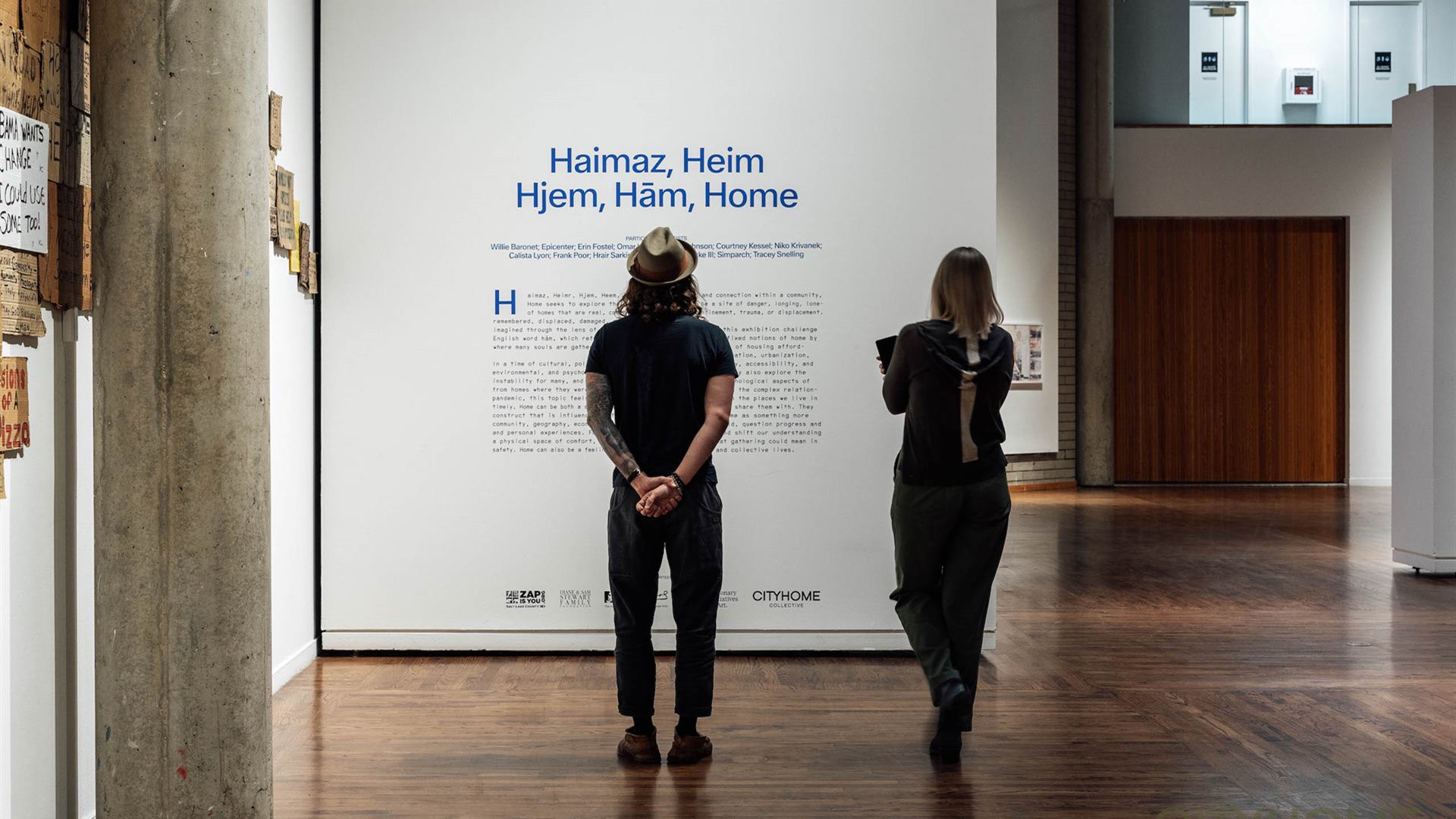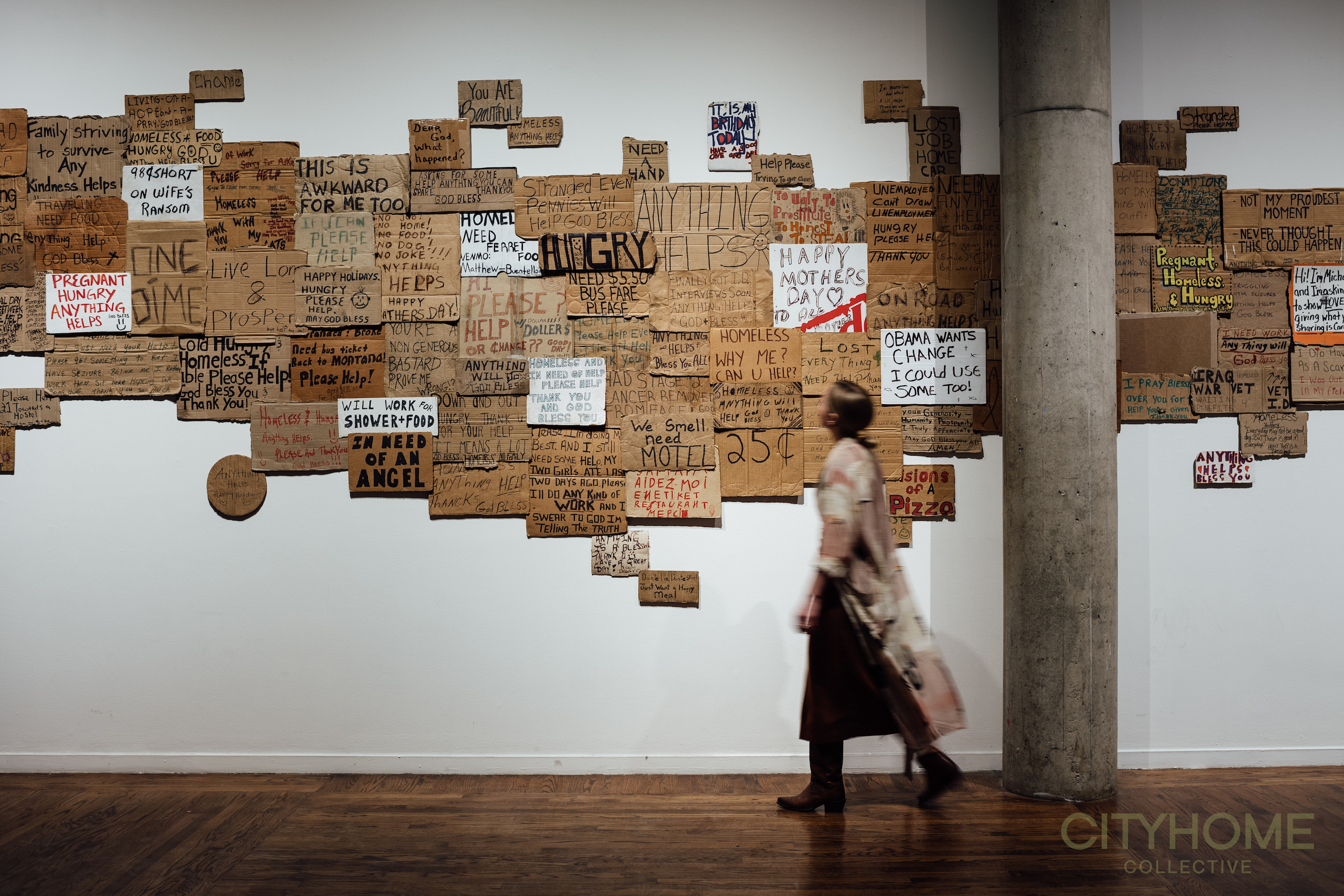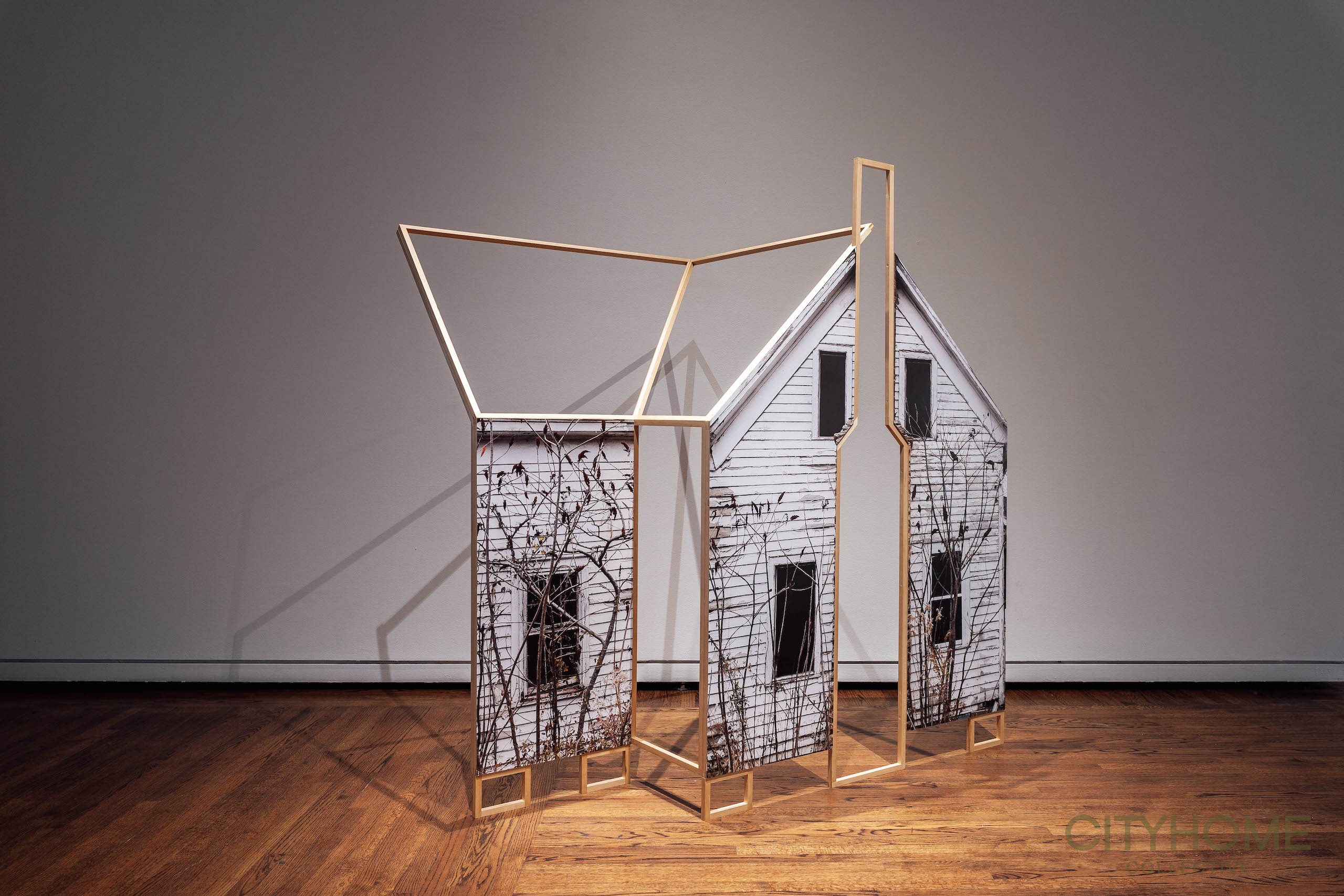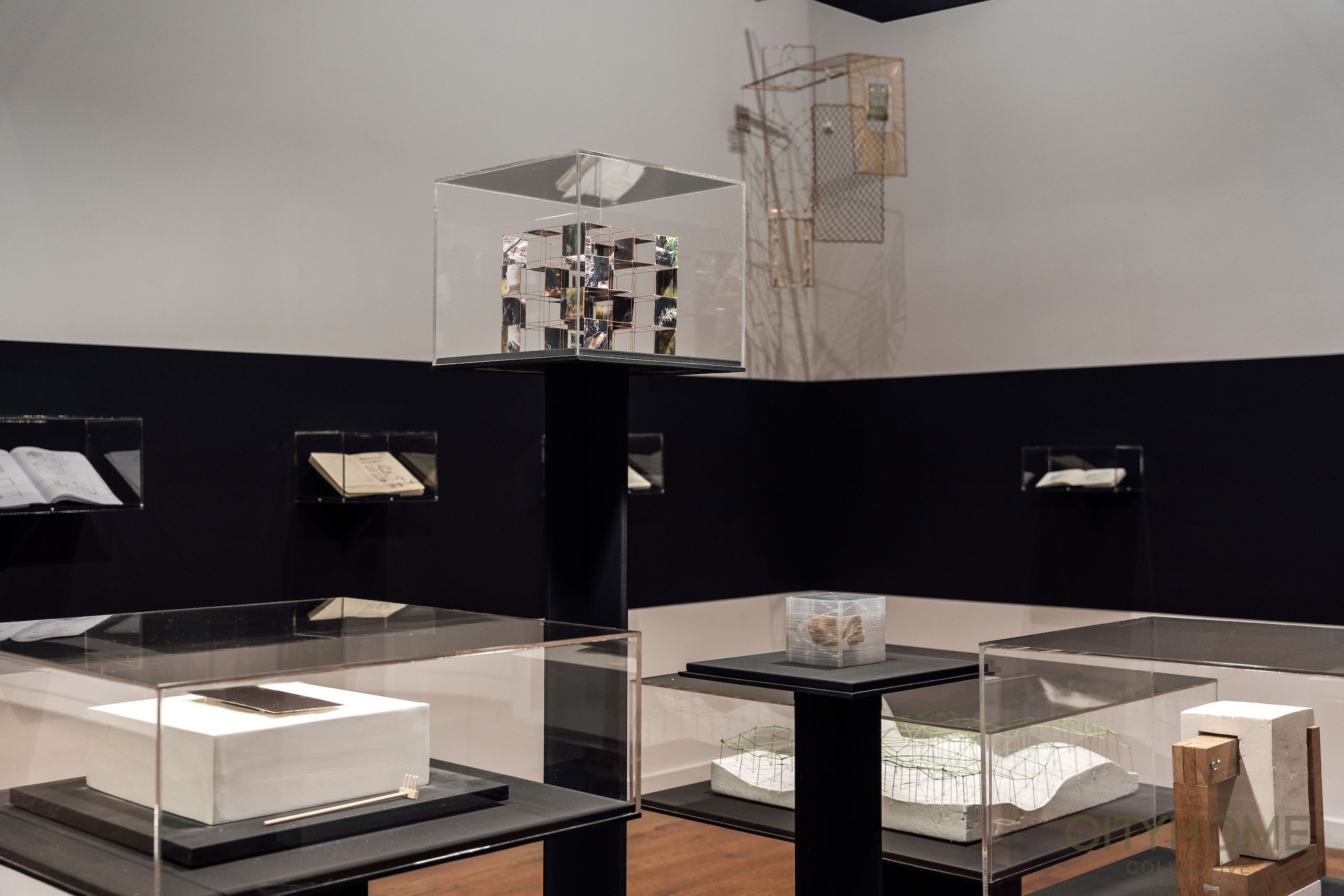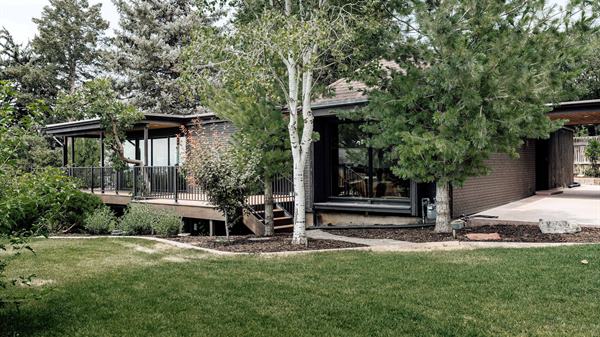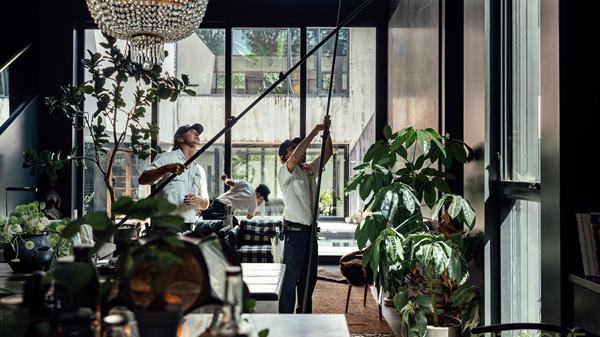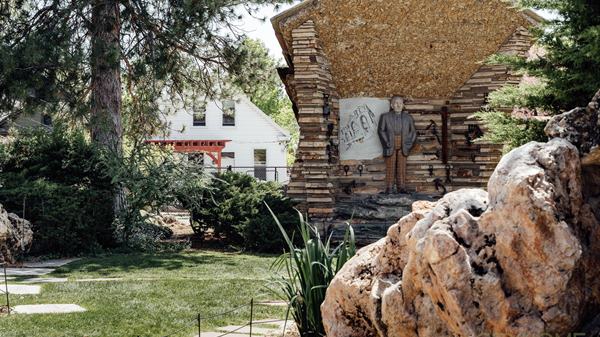UMOCA’s current exhibition, Haimaz, Heimr, Hjem, Heem, Hām, Home, is one that speaks directly to our hearts,
and allows us to consciously explore the notion of home on an emotional and physical level. For this wide-ranging exhibition, the Museum offers a multi-faceted perspective on the topic, defining home as “both a social and cultural construct that is influenced by family, community, geography, economics, politics, and personal experiences. For some, it is a physical space of comfort, refuge, and safety. Home can also be a feeling, a sense of belonging and connection within a community, or it can be a site of danger, longing, loneliness, confinement, trauma, or displacement.”
The exhibited artwork illustrates this range of ideas, as artists address issues such as housing affordability, gentrification, and accessibility, while also exploring the more personal aspects of our homes such as the complex emotional relationships and personal memories they hold. One of the first pieces encountered in the exhibition is We Are All Homeless by Willie Baronet, an installation of cardboard signs the artist purchased from un-housed people. The handwritten signs offer messages with tones that range from humor and hope to sadness and tragedy. The artist writes and allows us to muse: “What does it mean to be homeless: practically, spiritually, emotionally? Is home a physical place, a building, a structure, a house? Or is it a state of being, a sense of safety, of being provided for, of identity? I see these signs as signposts of my own journey…of reconciling…my judgments about those experiencing homelessness.”
Artist Frank Poor uses photography and wood to visually illustrate the duality of home for his piece, House-Milton GA, a sculptural replica of a typical house in the rural south. The image evokes nostalgia and memory for the artist, yet its shape is not fully three-dimensional and leaves empty spaces within its outline. The exhibition text states: “With the flatness of a stage set, the work only performs the role of home - an echo of a nonexistent past-without offering shelter or interior.”
Inequity for Sale is an insightful mixed media piece by Tonika Johnson that describes the challenges that Black populations have historically faced when it comes to home ownership, particularly through racist lending contracts in the 1950s and 60s. This mixed media work, which includes an informative video, was created in partnership with the National Public Housing Museum and is an important look at the predatory practices that have significantly shaped economic poverty in certain cities across America.
We were inspired by these and many other artists in this show (including our friends at Sparano + Mooney Architecture, who debuted a special complimentary exhibit that illustrates their concept and design process) and were honored to be an exhibiting partner. With our belief that truly finding home means looking within, our contribution was to offer visitors a solitary space in which you can share your own reflections on what home means to you. We have been inspired by your poetry, honesty, humor and deep introspection around the topic.
It is this community connection that motivates us to do the work that we do, and to continue to invite our clients, friends, and community to “come home.”
Haimaz, Heimr, Hjem, Heem, Hām, Home | March 10, 2023 – July 15, 2023
